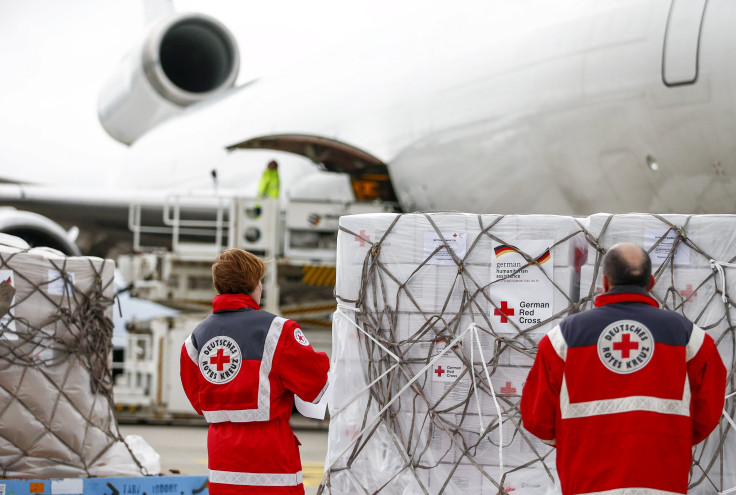Nepal Earthquake 2015: Diseases, Clean Water, Overcrowding Top Aid Workers' Concerns

Clean water, overcrowding and the risk of disease tops the list of concerns aid workers have for helping the estimated 5 million people affected by Saturday’s earthquake that rocked Nepal. The 7.8-magnitude quake has killed at least 4,000 people as of Monday, a number that is expected to rise, as relief organizations are finding it a challenge to reach the epicenter of the temblor.
“Sanitation is a huge issue. That is the key to keeping people healthy,” said Jana Sweeny, a spokeswoman for the American Red Cross. Nepal had very limited health facilities before the quake struck on Saturday, so organizations are trying to build additional field hospitals and deploy doctors and nurses to the area.
Of Nepal’s 75 districts, 35 have been affected by the earthquake, including five that have been “affected severely,” according to Unicef spokesman Chris Tidey. “This is a fairly complex situation,” he said. “Right now we're looking at anywhere from 1 million to 1 1/2 million people sleeping outdoors, either because their homes are destroyed or they’re fearful of aftershocks.”
Matt Stephens, an aid worker on the ground in Nepal for World Vision, a charity based in Washington state, said the cramped quarters have relief organizations concerned about parasitic diseases. “When you have people in temporary settlements and overcrowding, obviously there’s going to be a hygiene issue,” he said. “Our watch is going to be very critical in terms of getting water set up.”
World Vision expects to reach 100,000 people in its initial relief effort, he said. That includes handing out tarps, blankets, educational materials, hygiene supplies and child-friendly spaces to give kids opportunities to play sports, games, sing songs and receive informal education. “The aftershocks are ongoing, and they’ve just added to the stress that children feel,” he said.
The topography of Nepal is also making it difficult to reach remote areas, he said. There are “massive cracks in the road” about 20 kilometers outside Kathmandu, the capital, according to Stephens. He said the Nepali government has considered having aid groups use helicopters to reach those affected in villages. “The areas that have been hardest hit, it’s just notoriously difficult to get information,” Stephens said, including how many families have lost their homes.
Unicef’s top priority is getting access to safe water, which had been an issue in Nepal even before the earthquake. The UN agency is giving people oral rehydration salts and zinc supplements to protect against diarrhea as well as issuing therapeutic feeding -- a high-protein paste comparable to peanut butter -- to ensure that kids are getting proper nutrition. The organization is also planning to set up temporary classrooms so education isn’t disturbed.
The American Red Cross is deploying a relief emergency response unit to hand out tarps, tents, kitchen supplies and cans to hold clean water, Sweeny said. The Nepal Red Cross is the lead agency on the ground, with 100,000 volunteers and branch offices throughout the region. The Red Cross is concerned about water-borne diseases like cholera and others like measles that can spread when people congregate in crowded spaces.
"Aid is coming in, but people really need help now," said Stephens, of World Vision. "Even in distributions today, demand is significantly outstripping supply."
© Copyright IBTimes 2025. All rights reserved.





















